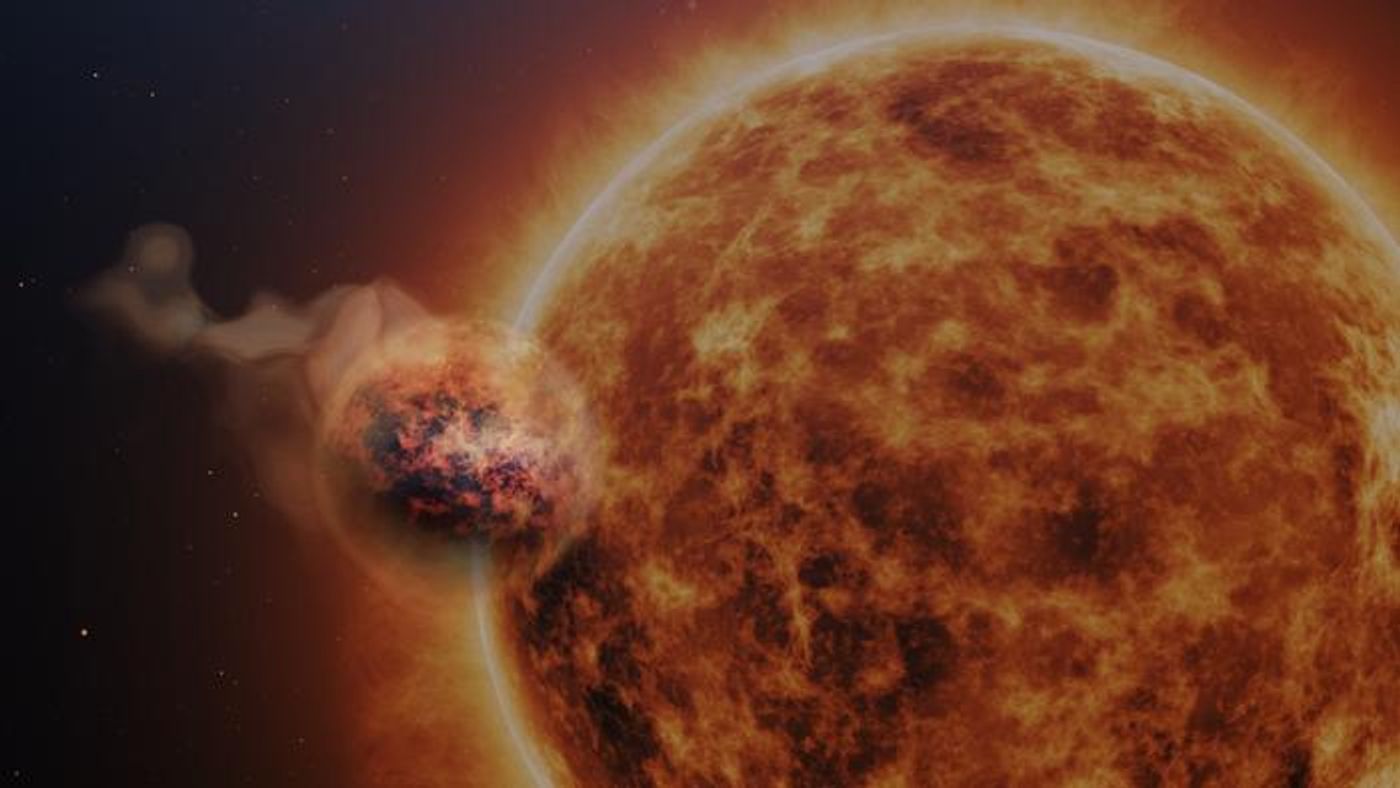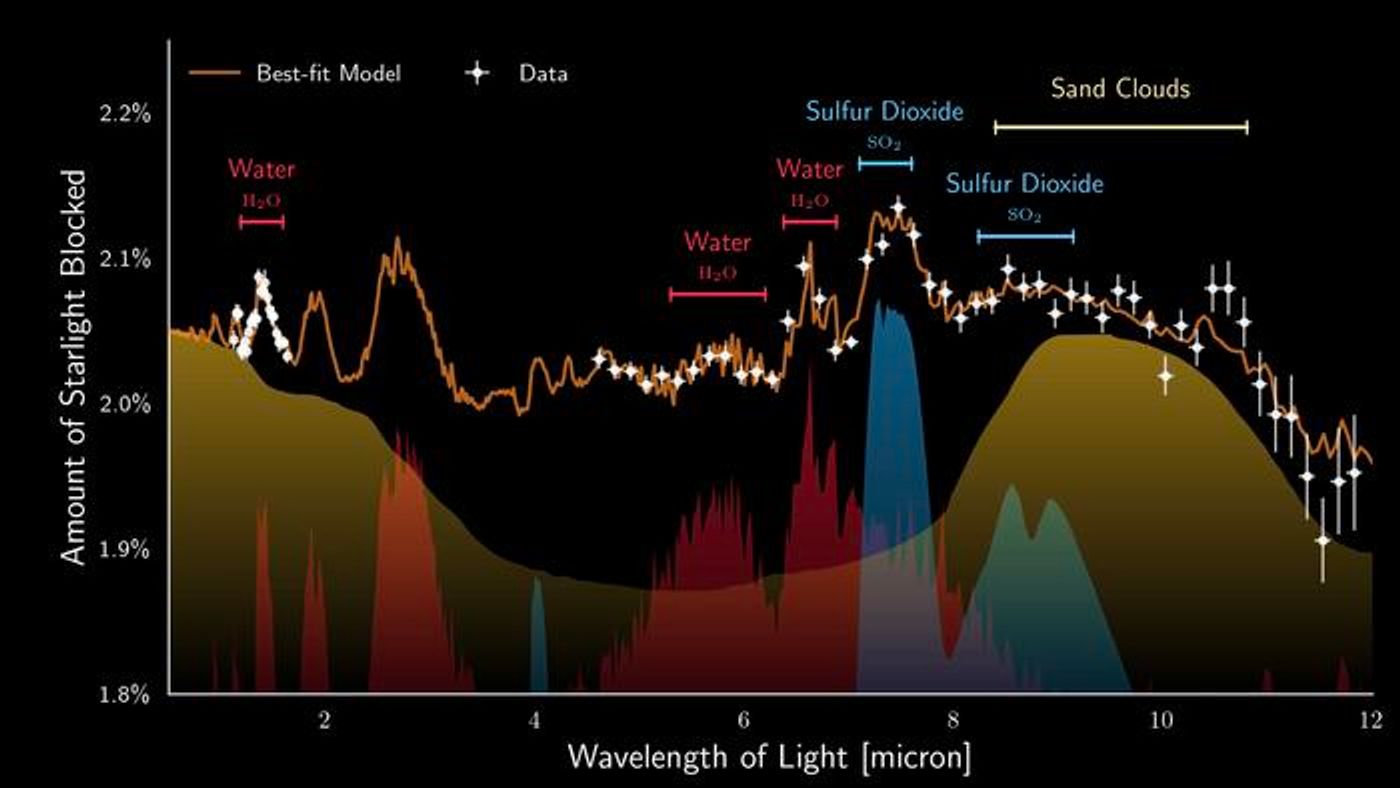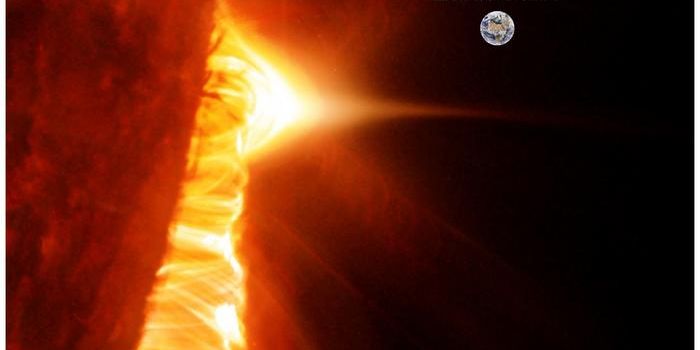Exoplanet WASP-107b: A Fluffy Giant with Water, Sulfur Dioxide, and Silicate Sand Clouds
NASA’s James Webb Space Telescope, the world’s most powerful telescope ever built, continues to dazzle with its scientific findings both within and outside our solar system. Most recently, an international team of researchers used JWST’s Mid-Infrared Instrument (MIRI) to analyze the atmosphere of WASP-107b, a Neptune-like exoplanet located approximately 211 light-years from Earth and orbits its parent star in just 5.7 days.
Using MIRI, the team identified water vapor, sulfur dioxide, and silicate sand clouds swirling around in the atmosphere of WASP-107b, which is considered a “fluffy” exoplanet since its mass is close to Neptune’s, but its overall size is closer to Jupiter, making it unique compared to the gas giants of our solar system. The findings were published today in the journal Nature.
Artist illustration of WASP-107b and its parent star, which are located approximately 211 light-years from Earth. (Credit: Illustration: LUCA School of Arts, Belgium/ Klaas Verpoest (visuals), Johan Van Looveren (typography). Science: Achrène Dyrek (CEA and Université Paris Cité, France), Michiel Min (SRON, the Netherlands), Leen Decin (KU Leuven, Belgium) / European MIRI EXO GTO team / ESA / NASA)
"JWST is revolutionizing exoplanet characterization, providing unprecedented insights at remarkable speed," said Dr. Leen Decin, who is a full professor in stellar and exoplanet astrophysics at KU Leuven and a co-author on the study. "The discovery of clouds of sand, water, and sulfur dioxide on this fluffy exoplanet by JWST's MIRI instrument is a pivotal milestone. It reshapes our understanding of planetary formation and evolution, shedding new light on our own Solar System."
By analyzing WASP-107b’s atmosphere, the team was able to gain a better understanding of the aggressive chemical composition of this unique and awe-inspiring exoplanet, with the two major findings being the absence of methane and the presence of sulfur dioxide, with the former indicating WASP-107b possesses a warm interior and the latter indicating the parent star’s photons penetrate deep into WASP-107b’s atmosphere, producing the sulfur dioxide. Additionally, the fluffy nature of WASP-107b means the astronomers were able to make first-time observations of the chemical compositions of the exoplanet’s clouds, including the identification of sand particles, which is prevalent in deserts and beaches on Earth.
A spectrum analysis of WASP-107b obtained by JWST’s Mid InfraRed Instrument (MIRI), which identifies evidence for water vapor, sulfur dioxide, and silicate (sand) clouds within the exoplanet’s atmosphere. (Credit: Michiel Min / European MIRI EXO GTO team / ESA / NASA)
“JWST enables a deep atmospheric characterization of an exoplanet that does not have any counterpart in our Solar System, we are unravelling new worlds!”, said Dr. Achrène Dyrek, who is a postdoctoral researcher at CEA Paris and lead author of the study.
This groundbreaking study helps reveal the complex nature of exoplanetary atmospheres while opening doors into other unique attributes astronomers could identify in exoplanetary atmospheres in the coming years.
What new discoveries will JWST make about fluffy exoplanets in the coming years and decades? Only time will tell, and this is why we science!
As always, keep doing science & keep looking up!
Sources: EurekAlert!, NASA, Nature, KU Leuven










